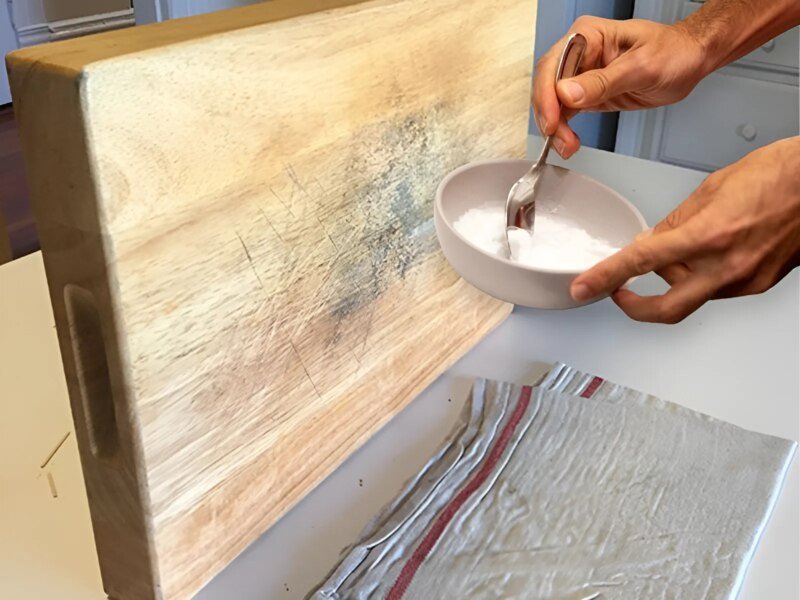Wood brings natural charm and durability to any home, but it also has one weakness—its porous nature makes it highly susceptible to mold. When wood is exposed to moisture, whether from humidity, leaks, or flooding, mold spores quickly settle in and begin to grow. What starts as faint discoloration can soon spread into a serious problem that threatens both the wood itself and your indoor air quality.
Right Cleaning mold from wood can feel intimidating, especially if you’ve never handled it before. Is vinegar safe? Should you use bleach? When is it better to call professionals instead of scrubbing it yourself? These are common questions homeowners face when they notice black, green, or even white mold patches forming on wood surfaces.
In this article, we’ll explore the safest ways to deal with wood mold. You’ll learn about DIY options for small spots, the professional methods used for larger outbreaks, and proven strategies to prevent mold from coming back. We’ll also cover common mistakes people make, share real homeowner experiences, and explain how to protect wood furniture, flooring, and structural beams for the long term.
Why Mold Thrives on Wood
Wood naturally absorbs moisture, which means it stays damp longer than materials like metal or plastic. Combine that with poor ventilation, high humidity, or water damage, and you have the perfect environment for mold growth.
For example, a family in a coastal town found mold creeping up their wooden window frames every rainy season. The constant condensation provided just enough dampness for spores to spread.
Understanding the causes of mold makes it easier to prevent it and choose the right mold removal from wood method.
Many homeowners rely on specialists such as GCR Builders LLC, who offer professional mold cleaning and wood restoration services tailored to tough mold problems.
How to Clean Mold Off Wood the Right Way
Unlike tile or metal, wood cannot handle harsh scrubbing or overly strong chemicals. The goal is to kill mold while protecting the surface.
Simple DIY Method for Small Areas
- Wear gloves, goggles, and a mask for protection.
- Dry the affected area, no cleaning works if the wood stays damp.
- Vacuum using a HEPA filter to capture loose spores.
- Mix a mild cleaner: vinegar, baking soda, or a wood-safe solution.
- Gently scrub with a soft brush.
- Wipe dry and use fans or sunlight to remove leftover moisture.
Safe Cleaning Solutions
- Vinegar: Natural antifungal, safe for most finished wood.
- Baking soda: Gentle abrasive that won’t scratch surfaces.
- Commercial wood cleaners: Designed for mold without damaging finishes.
Important: Never rely on bleach, it may whiten the surface but doesn’t penetrate wood pores, leaving mold behind.
Should You Choose DIY or Professional Cleaning?
Deciding between DIY and professional help depends on the size and depth of the mold problem.
DIY Works Best When:
- Mold is limited to a small area (under 10 sq. ft.).
- It’s on the surface of furniture or trim.
- The wood isn’t showing signs of structural weakness.
Professional Services Are Needed When:
- Mold covers wide areas of flooring, beams, or walls.
- There’s an ongoing musty odor after cleaning.
- The wood feels soft, spongy, or shows signs of decay.
Professionals use HEPA vacuums, antimicrobial treatments, and drying systems that remove both mold and the underlying moisture problem. That’s why professional mold cleaning services often prevent recurrence better than DIY attempts.
Wood Mold Cleaning Tips to Avoid Damage
- Keep indoor humidity below 50% with a dehumidifier.
- Improve airflow in basements, attics, and bathrooms.
- Clean up water spills on wood surfaces immediately.
- Never try to seal or paint over mold—it only traps moisture.
- Schedule inspections after water leaks or flooding.
One homeowner mistake: painting over moldy baseboards. Within weeks, the stains reappeared because the mold was never removed properly.
How to Prevent Mold on Wood Surfaces
Prevention is always cheaper than restoration. If you want to keep wooden furniture and structures mold-free, adopt these habits:
- Use fans or open windows for proper airflow.
- Leave space between walls and wooden furniture.
- Apply protective wood sealants in damp-prone rooms.
- Store wooden items in dry, climate-controlled spaces.
These steps reduce the need for mold damage repair in the future.
Frequently Asked Questions About Cleaning Mold from Wood
What’s the best way to remove mold from wood?
Natural cleaners like vinegar and baking soda are effective for small spots. For larger infestations, professional cleaning is the safest option.
Can I clean mold from wooden furniture myself?
Yes, if the mold is surface-level. Use gentle cleaners and always dry thoroughly afterward.
Are DIY mold removal methods safe?
They can be safe if you wear protective gear and limit cleaning to small areas. Larger outbreaks should be left to experts.
Does professional mold removal harm wood?
No, professionals use wood-safe products and methods that eliminate mold while preserving the surface.
How can I stop mold from growing back?
Control indoor humidity, fix leaks quickly, and apply protective sealants on wood surfaces.
Final Thoughts
Mold on wood is more than just a cosmetic issue, it can weaken furniture, flooring, and even a home’s structure if ignored. Knowing how to clean mold off wood properly is key, whether you’re tackling a small spot with vinegar or hiring specialists for a major cleanup.By acting quickly, using safe cleaning methods, and controlling moisture, you can protect your wood for years to come. And when the situation feels too large to manage, calling professional mold cleaning services ensures the problem is solved at its root.


